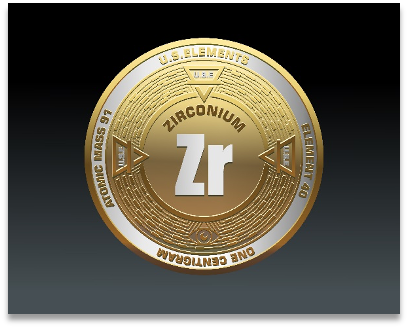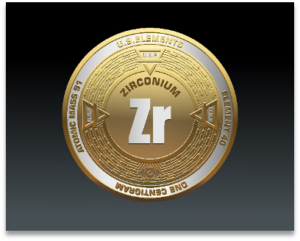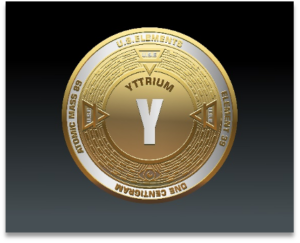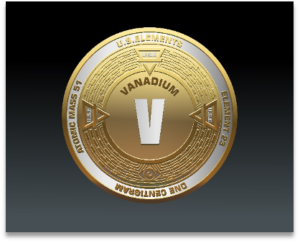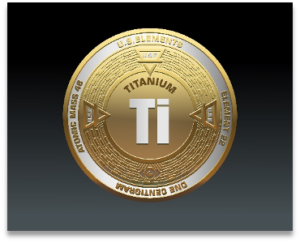Zirconium may not be a household name, but it plays a critical role in some of the most advanced technologies on the planet. Best known for its exceptional resistance to corrosion and high temperatures, zirconium is indispensable in nuclear reactors, aerospace applications, and cutting-edge electronics. As the fifty-fourth entry in our Critical Minerals Series, we delve into why zirconium is essential to America’s technological and energy future and why securing its domestic supply is a strategic necessity.
Why the U.S. Needs It
Zirconium’s primary use is in nuclear power plants, where it is a key component of fuel rod cladding. Its low neutron absorption properties make it ideal for safely containing nuclear fuel while allowing efficient reactor operation. Additionally, zirconium alloys are vital in aerospace engineering, advanced ceramics, and even medical implants due to their biocompatibility and durability. The demand for zirconium is only expected to rise as the U.S. expands its clean energy infrastructure and high-tech manufacturing.
Where It’s Found Domestically
Zirconium is primarily extracted from the mineral zircon, found in heavy mineral sands. The United States has known deposits in Florida, Georgia, and Virginia, but production remains limited. While the country does mine some zirconium-bearing minerals, refining and processing capabilities are heavily reliant on imports, particularly from Australia and South Africa. Expanding domestic extraction and refining operations could reduce dependence on foreign suppliers.
Economic Realities
The zirconium market is valued in the billions, with demand driven by the nuclear industry, aerospace sector, and advanced manufacturing. Price fluctuations are influenced by geopolitical factors, supply chain bottlenecks, and global production output. China is a major processor of zirconium, raising concerns about potential supply disruptions that could impact critical industries in the U.S.
Processing and Technological Innovations
Traditional extraction of zirconium involves separating it from heavy mineral sands, followed by refining processes to produce high-purity zirconium metal. Emerging technologies are focusing on more efficient separation methods and recycling initiatives to recover zirconium from industrial waste and spent nuclear materials. Advancements in refining techniques could enhance the U.S.’s ability to process domestic zirconium resources more cost-effectively.
Abundance and Waste Recovery Potential
Zirconium is relatively abundant in the Earth’s crust, occurring at approximately 165 parts per million. While natural reserves are not scarce, processing challenges and geopolitical dependencies create supply vulnerabilities. There is significant potential to recover zirconium from industrial byproducts and mine tailings, reducing waste and increasing supply stability.
Time to Market
The mining-to-market timeline for zirconium varies depending on extraction and processing capacity. Developing new domestic mining operations and refining facilities could take years, but investments in infrastructure could expedite the process. Additionally, streamlining regulatory approvals and incentivizing domestic production could accelerate the availability of domestically sourced zirconium.
Current and Future Applications
Zirconium’s versatility extends beyond nuclear power. Its high resistance to corrosion makes it ideal for use in chemical processing plants, where it withstands harsh environments. The aerospace and defense industries rely on zirconium alloys for high-performance applications, and its role in emerging technologies, such as solid-state batteries and superconductors, is gaining attention. As innovation drives new applications, the demand for zirconium will continue to grow.
Impact on Everyday Life
Although most people don’t think about zirconium, it touches daily life in various ways. From the structural integrity of nuclear power plants to high-performance components in jet engines, zirconium is behind many modern conveniences. Even dental crowns and surgical implants benefit from zirconium’s strength and biocompatibility.
Consequences of Supply Shortages
A disruption in zirconium supply could have severe consequences for the nuclear energy sector, defense manufacturing, and advanced technology industries. Without a stable supply, the U.S. risks increased costs, delayed projects, and reliance on geopolitical rivals for essential materials. Strengthening domestic zirconium production would mitigate these risks and bolster national security.
Import Dependence
The U.S. imports a significant portion of its zirconium, with Australia and South Africa being primary suppliers. However, China’s control over much of the global zirconium refining market adds an additional layer of vulnerability. Reducing import dependence through increased domestic mining and refining capabilities is critical to securing America’s zirconium supply chain.
Securing America’s Future with Zirconium
Zirconium is more than just another critical mineral; it is a backbone of the nuclear, aerospace, and advanced manufacturing industries. As we conclude this fifty-fourth entry in the Critical Minerals Series, it is evident that expanding domestic production and refining capabilities is a necessary step toward mineral independence. By investing in zirconium supply chains today, we ensure a more secure and technologically advanced future for America.
Stay tuned as we continue our journey through the essential materials that power our nation’s industries.

